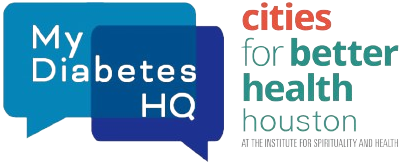Type 2 diabetes affects millions globally. While it’s long been considered a chronic, progressive disease, research and personal success stories show that, for many, it’s possible to reverse type 2 diabetes naturally, or more accurately, achieve remission.
But what does that mean? And how can you do it safely?
Let’s explore the facts, the science, and natural strategies to help you start your journey toward remission.
What Does “Reversing” Type 2 Diabetes Mean?
Is It Really Possible?
The Role of Cortisol in Diabetes Management
Yes. Several studies confirm that type 2 diabetes remission is achievable, especially in the early stages.
The most cited is the DiRECT trial (Diabetes Remission Clinical Trial), a UK-based study that found nearly 46% of participants achieved diabetes remission after one year by following a structured low-calorie diet and weight loss program.
Key factors that improve success rates:
Recent diagnosis (less than 6 years)
Sustained weight loss (10% or more)
Medical supervision and accountability
5 Natural Strategies to Reverse Type 2 Diabetes
1. Adopt a Low-Carb or Mediterranean Diet
Studies show that reducing carbs helps stabilize blood sugar. Two of the most effective dietary approaches include:
-
A low-carb or ketogenic diet, which lowers insulin levels
-
A Mediterranean diet, rich in healthy fats, vegetables, and lean proteins
A 2020 meta-analysis found that low-carb diets significantly reduced A1C and improved glycemic control in people with type 2 diabetes.
2. Try Intermittent Fasting (Safely)
Intermittent fasting (IF) helps the body improve insulin sensitivity and burn stored glucose. The popular 16:8 method (fast for 16 hours, eat within 8) is often used. However, IF should be practiced with medical guidance, especially if you’re on blood sugar-lowering medication.
Read more: Intermittent fasting for type 2 diabetes – Mayo Clinic
3. Exercise Regularly
Exercise makes your cells more sensitive to insulin. The American Diabetes Association recommends:
-
At least 150 minutes/week of moderate aerobic activity
-
Resistance training 2–3 times per week
Simple activities like walking after meals can help lower blood sugar levels.
4. Manage Stress and Improve Sleep
Chronic stress and sleep deprivation raise cortisol levels, increasing insulin resistance. Techniques that help:
Deep breathing, meditation, or yoga
Limiting blue light exposure before bed
Sleeping at least 7–8 hours a night
5. Lose Excess Weight (Especially Belly Fat)
Visceral fat plays a key role in insulin resistance. Losing just 5–10% of your body weight can significantly improve glucose control. In the DiRECT study, those who lost over 15 kg (33 lbs) had an 86% remission rate after 1 year.
Real-Life Success Story
“After switching to a low-carb Mediterranean diet and walking every day, I lost 30 pounds in 6 months. My A1C dropped from 8.7% to 5.9%. My doctor confirmed I was in remission—without insulin.”
— Marie T., 42
These transformations aren’t magic—they’re rooted in consistent, strategic lifestyle changes.
What to Avoid
Not all natural methods are safe. Be cautious of:
❌ Crash diets or extreme caloric restriction
❌ Unverified “miracle” supplements
❌ Discontinuing medication without medical advice
Always consult your healthcare provider before making major changes.
Final Thoughts
Yes, you can reverse type 2 diabetes naturally—with discipline, support, and the right tools. Focus on whole foods, physical activity, sleep, and weight loss. Don’t go it alone—work with a medical provider or diabetes educator to do it safely.



